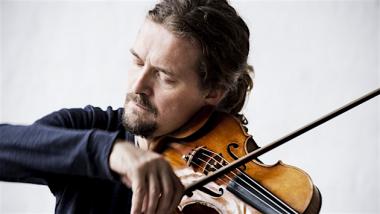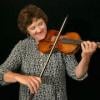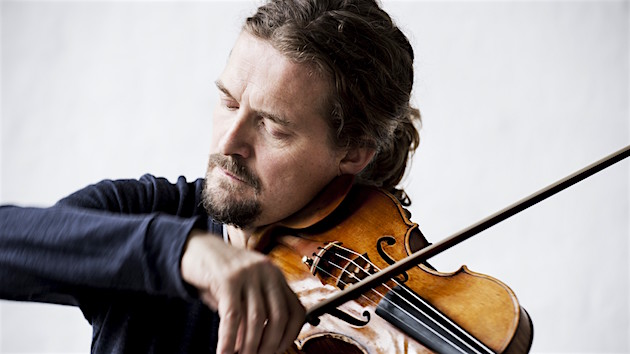
Just as stars in the sky first form in dense, gaseous clouds, musical stars also do not rise from thin air: From teachers to agents to fellow musicians, various supporting forces often remain out of the limelight. But when star violinist Christian Tetzlaff joined the San Francisco Symphony at Davies Hall on Sunday, the Symphony’s associate principal oboist, James Button, also shone brightly. Whereas Tetzlaff soloed in a concerto, Button’s solo passages peppered the program of works by Mozart, Ravel, and Sibelius.
The evening opened with Ravel’s Le Tombeau de Couperin. The word Tombeau signifies a musical memorial. First conceived for solo piano, Ravel wrote this piece during the Great War to honor not only bygone French Baroque music, which Couperin epitomized, but also certain loved ones Ravel lost in the war. Ravel’s orchestral version of Le Tombeau has four movements, and the composer’s gift for choosing tone colors precisely from the orchestra’s wide palette permeates the suite.
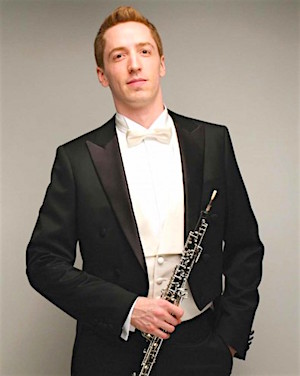
In this work, Ravel’s choices demand much from the oboe. Button himself described it like this in the program notes: “If you were to walk down the hallway of any music conservatory ... there is a good chance that you would hear an oboist practicing Le Tombeau de Couperin.” The oboe’s prominence was felt from the outset, because it introduced the melody in the opening Prélude. Here — and then again throughout this piece — Button met Ravel’s challenges with glad grace. It sounded effortless, which probably indicates he was a diligent student during his years at conservatory.
This opening work sparkled like champagne, after which Tetzlaff joined the orchestra to perform Mozart’s third violin concerto. This is hardly the most frequently performed of Mozart’s five violin concertos. I personally had never before heard it played live.
We believe that Mozart wrote this piece in 1775, which falls comfortably within what we now call the “Classical” period. Structurally, though, especially the first movement sounds closer to Couperin’s earlier era, in part because it does not follow the “classical” form of an initial section ( “exposition”) introduced by the orchestra that the soloist subsequently repeats. Instead, Tetzlaff’s calm, assured mastery resounded right out of the gate. And it endured through the entire piece, especially in the cadenzas that he himself composed. Before he played solo Bach for a cerebral, restrained encore, the outer movements of Mozart’s concerto again allowed the oboist to glow.
After intermission, the program closed with Sibelius’s second symphony. Sibelius composed it around the turn of the 20th century, a time during which Russia occupied his native Finland. These four movements sketch a from-struggle-to-victory narrative reminiscent of Beethovenian monumentality, which invites hearing nationalistic undertones.
The second movement, an Andante, was the most devastatingly poignant. The program notes cited the composer, who described it as “the most broken-hearted protest against all the injustice that threatens at the present time.” Like the inner Adagio of the Mozart, it opened with pizzicato strings. Particularly in the Sibelius, though, removing the warm resonance of the bowed strings had the intended effect of creating a hollow, foreboding effect that feels like the floor literally dropping out from beneath your feet on one of those dizzying amusement-park rides.
The bassoons initiated the melody in Sibelius’s Andante. But the solo oboe resumed center stage in the inner section of Sibelius’s ensuing Scherzo.
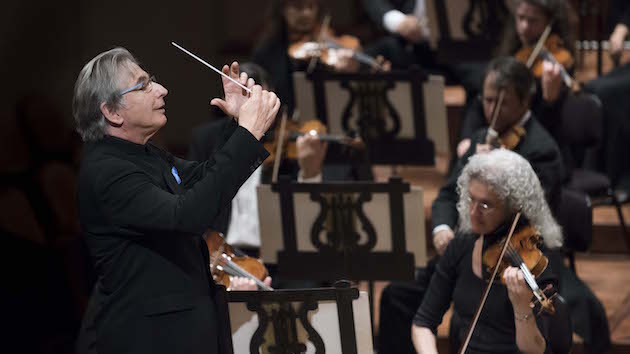
At live performances, I always wonder why the pieces on the program were chosen to be performed together. On Saturday, I inevitably heard musical links, such as the aforementioned intimation of Couperin’s era in Mozart’s concerto and the common use of pizzicato in the pieces by Mozart and Sibelius to pull the rug from underneath the orchestral texture. Conceptually, I’m not sure there was any rhyme or reason governing why these three pieces were programmed together.
Certainly, though, this performance highlighted not only Tetzlaff’s talents, but also those of Button. And as I left the concert, chiefly I had in my head not melodies from the performance, but instead that song by Rihanna and Jay-Z about about stars shining together.

